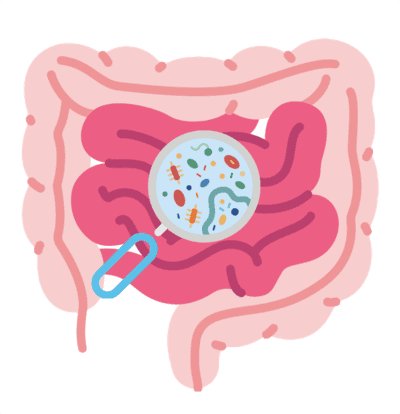Prebiotics and Probiotics – What’s the Difference?
 Prebiotics vs. Probiotics – What are They?
Prebiotics vs. Probiotics – What are They?
Microorganisms may be invisible to the naked eye, but our bodies simply could not function without them. In fact, there are more microorganisms in and on your body than actual human cells. That might sound impossible, but it’s true.
Many of us have heard about probiotics and the benefits that they bring. Probiotics are bacterial cultures that promote healthy gut flora. You see, there are live bacteria which inhabit your digestive tract. These bacteria help break down food, enabling you to receive the full nutritional benefit of what you eat.
Recently you may have heard of “prebiotics”. What’s the difference, you ask?
Think of prebiotics as food for the beneficial bacteria in your gut. They usually consist of fibrous carbohydrates that we cannot digest ourselves. However, the bacteria in our GI tract will happily feast on these carbs, breaking them down into nutrients we can absorb. Not only does this feed our bodies, it feeds the bacterial colonies as well, ensuring a stable level of healthy gut bacteria. Both prebiotics and probiotics are essential for our gut health – and gut health equals overall health.
Why do We Need Probiotics?
The state of your gut microbiome has many implications for your broader health. After all, we are what we eat, and the good bacteria in our gut let us make the most of our food.
Folks who have digestive complications, food sensitivities, or who have taken courses of antibiotics can benefit the most from probiotics. However, digestive health is important for everyone’s body.
Scientists are discovering that your gut bacteria may affect everything from your energy level to your mood. This makes probiotics even more crucial than we initially thought.
There are two main ways to increase your probiotic intake. The first method is to use supplements. These can be capsules or tablets filled with live cultured bacteria. There are also dozens of food products fortified with probiotics; these include everything from juices to snacks infused with beneficial cultures.
The other method is to eat foods that are naturally high in probiotic bacteria. Fermented foods in particular are an excellent source. Common fermented foods are yogurts, cheeses, kombucha, sauerkraut or kimchi. You can also make your own wonderful fermented foods at home.
Try using both methods to ensure a healthy level of gut bacteria.
Why do We Need Prebiotics?
While probiotics are a great way to regulate digestive health, they don’t contain the complete package. Remember, these bacteria are living things that call your gut home. Like any living thing, they need the proper nutrition to thrive. Prebiotics are fibrous carbohydrates that provide that nutrition. They typically come from foods like legumes, bananas, cruciferous vegetables, and oats. Normally, we cannot digest these fibers – they simply pass through our systems.
However, our gut bacteria can break these fibers down, which enables us to receive the nutrition within. Not only does this make our food more nourishing to us, it keeps our internal bacterial colonies fed and happy. Additionally, our gut bacteria can convert these fibers into compounds that we need. These include short-chain fatty acids, which are essential for a healthy gut lining.
Like probiotics, prebiotics can be absorbed from either food or supplements. Fibrous foods are a great nutritional source of prebiotics, but supplements can ensure you are getting enough.
Balance is Key
Prebiotics and probiotics have almost a symbiotic relationship. They need each other to function effectively. Make sure that you’re receiving enough of both, and you will feel the difference. If you have questions about probiotic or prebiotic supplements, ask one of our supplement specialists. They will help you choose the product that’s right for you. Make sure you’re eating plenty of fermented foods and foods that are full of natural fiber.
